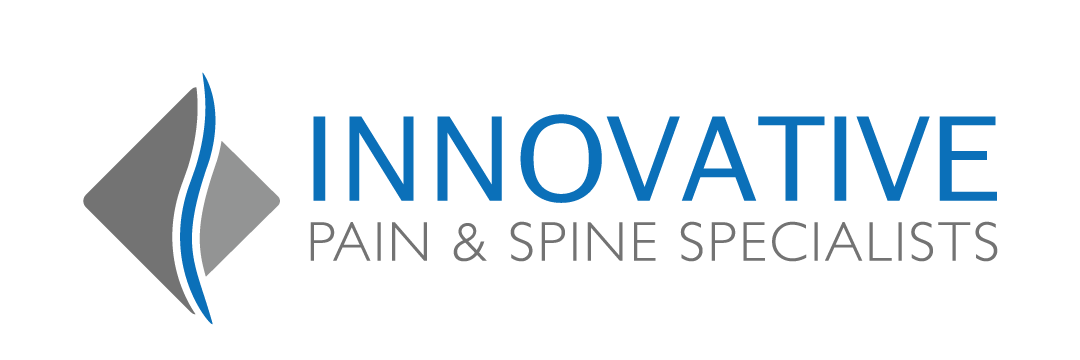Spinal Cord Stimulation Can Help with Various Pain Conditions
For people who suffer with chronic pain affecting the back, legs, feet, or other areas of the body, finding the right treatment to significantly reduce the pain is the key to regaining a healthy quality of life. If you suffer from chronic pain, Spinal Cord Stimulation (SCS) may be an option for you. SCS is an advanced therapy that is approved by the U.S. Food and Drug Administration and has been used for over 30 years to treat long-lasting pain. At Innovative Pain & Spine Specialists in Omaha and Lincoln, Nebraska, Drs. Phillip Essay, Kelly Zach, and Thomas Brooks have years of experience treating people with SCS to help relieve their chronic pain.
How does SCS Work?
SCS uses a device called a spinal cord stimulator. This device is implanted near the spinal cord to send small amounts of electrical pulses to the brain to relieve pain. Small wires, known as leads, carry a low-level, electrical current to the spinal nerves to stop you from experiencing chronic nerve pain. The leads receive power from a small, battery-powered generator implanted under the skin that needs to be charged daily and is controlled with a remote so you can increase the electrical impulses as needed. A spinal cord stimulator functions similarly to how a pacemaker is used to treat a heart condition.
The first step in SCS is for you to complete imaging and a psychological screening prior to trialing the spinal cord stimulator. The trial period is from three to seven days, depending on adjustments to tailor the device to your needs and to determine if it is the right treatment for your pain. This is like test-driving a car.
After a week-long trial period, Innovative Pain & Spine physicians will then evaluate your pain reduction and determine if you are a good candidate for SCS. The next step would then be to surgically implant the device along the spine to achieve long-term management of your chronic pain.
With SCS, you have the ability to control the electrical stimulation depending on factors such as the type of pain, time of day, or degree of pain. The stimulation can be tailored to meet your specific needs.
Positioning of the electrical leads varies based on the location of the pain. For example, for pain in the back, abdomen, pelvis, and legs, the electrical leads are positioned in the mid back. If the pain is in the neck, chest, and arm, the leads are implanted in the neck area. You control the level of electrical stimulation using a remote control, and it allows you the ability to turn off the stimulation as needed.
SCS does not eliminate the source of pain and so the amount of pain relief varies for each person. Studies have shown that over 80% of patients treated with spinal cord stimulation experience a significant reduction in pain.
Types of Pain Treated with SCS
SCS can be used to treat a variety of pain conditions, such as:
Failed Back Surgery Syndrome
Pain that continues or even increases after a surgery meant to relieve your back pain.
Sciatica
Sensory changes along the sciatic nerve that can feel like pins and needles and extend down the buttock, leg, and foot.
Complex Regional Pain Syndrome
Chronic pain that usually affects the arm or leg and typically develops after an injury or surgery in which the continued pain is out of proportion to the severity of the initial injury.
Peripheral Neuropathy
Pain that feels like numbness or tingling in the hands, feet, or both.
Nerve Root Pain
Nerves that have been damaged or compressed in the spine that cause neck, back, arm, or leg pain.
Who is a Good Candidate for SCS?
There are several indicators that physicians at Innovative Pain & Spine take into consideration when determining which patients are the best candidates for SCS. You might be a candidate if you:
- Have had back surgery, but still experience pain
- Have suffered injuries to the spinal cord or extremities
- You suffer from arachnoiditis
- Have used medications or therapies that failed to treat your pain
SCS provides other benefits to patients, such as:
- It is a minimally-invasive surgical procedure with a short recovery
- The device does not affect diagnostics like MRI
- There are no side effects that you might get from taking medications, such as tiredness or constipation
- Because the device is implanted inside your body, it doesn’t restrict you from doing activities you enjoy
- The device can be removed if it is no longer needed
If you have suffered from failed back surgery syndrome, sciatica, complex regional pain, or other nerve pain conditions, you might benefit from Spinal Cord Stimulation. Call Innovative Pain & Spine Specialists, in Omaha and Lincoln, Nebraska, at 402-413-5010 and schedule an appointment to talk with one of our physicians.
Sources:
innovativepainnebraska.com/spinal-cord-stimulation
neuromodulation.com/spinal-cord-stimulation
pubmed.ncbi.nlm.nih.gov/30898269/
treatingpain.com/news-updates/2019/august/spinal-cord-stimulation-therapy-for-chronic-pain/
